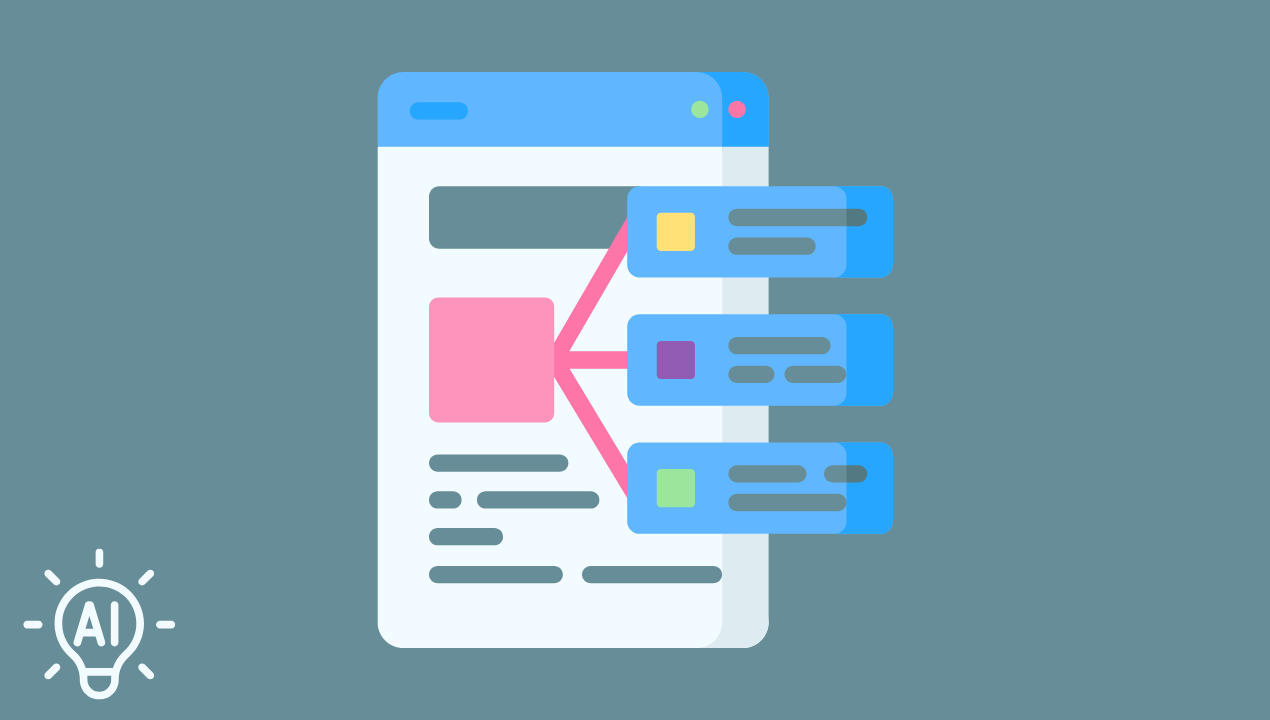As content teams continue to transition to a headless CMS solution for more flexible, scalable options, never has the need for a seamless, fast authoring experience been greater. One emerging authoring capability that could go a long way involves the role of artificial intelligence in the content creation process. In this article, you’ll learn how AI (artificial intelligence) can suggest content blocks in headless authoring interfaces.
More specifically, AI-driven content block recommendations are starting to help editors assemble, arranging and publishing content in a headless manner. These intelligent recommendations promote productivity, consistency, and creativity and don’t disrupt the modular nature of headless content management systems.
Understanding Content Blocks in the Headless Paradigm
A headless CMS doesn’t think about content as defined pages but as blocks that are reusable modules that can be assembled in any fashion across any medium. These “blocks” might be a title, an article, a hero image, a call to action, a testimonial, a product card, or a video link. Editors will select and position the blocks based on the experience they want to create, while the frontend assets will display information based on the blocks.
Management API functionality becomes essential in this context, allowing developers and content teams to programmatically create, manage, and validate these blocks to maintain consistency and reduce errors. Yet while this capability provides tremendous latitude in content creation and expression, it can also be disorienting about which blocks to select, how they can fit together, and the best way to order and position them for maximum understanding and effectiveness.
AI’s Ability to Enhance the Experience of Content Creation: AI Suggest Content Blocks in Headless Authoring Interfaces
AI can elevate the experience of content creation by offering block opportunities based on creator intention, audience analytics, historical data, performance, and semantic relevance.
Editors no longer have to gain a blank slate; instead, they have thoughtfully compiled blocks recommended to them at their fingertips based on what they need to do to achieve their content goal conversion, engagement, or SEO growth. And these recommendations are not made up of thin air in one feeling; they exist in real-time relevance to the work at hand, the category of the piece, and the results of previously created similar pieces.
AI and Natural Language Processing to Facilitate Semantics-Based Recommendations
Natural language processing is imperative for helping AI understand what’s happening with the content. When a creator provides a title or something from the introduction (or the first few sentences), the AI can utilize the language to read subtleties, meaning, tonality, and subject relevancy.
Therefore, if someone is writing about Product A, they’re probably going to include testimonials about Product A; therefore, after three paragraphs of persuasive writing about Product A, the AI might suggest a testimonial slider that the creator can easily input into the work. Extrapolating semantics allows every suggestion to seem logical, relieving creators of the burden of constantly having to assess whether a suggestion truly makes sense.
AI Based on Usage and Performance Over Time: Suggest Content Blocks in Headless Authoring Interfaces
The longer AI operates within a CMS, the more effective it becomes. Many recommendations can emerge based on past operations within a CMS. If the integration realizes that blocks XYZ yield thousands of finished articles with high loading speeds, it may recommend those as solid inclusion options, even before the creator knows what else might be needed.
Additionally, if product pages have increased view times with reviews at the top instead of the bottom, AI can recognize when similar efforts are being developed and push creators in that direction. Over time, a CMS becomes a fluid entity that knows what happens during each campaign and article creation and adapts accordingly for future product launches.
Personalizing Block Suggestions From Editing History
AI can also personalize block suggestions based on the history of you as an editor and what you’ve done in the past and what it assumes you may want to do in the future. If a specific content editor always works with blogs, for example, and always adds quote blocks or always has a testimonial layout on a product page, the CMS can offer those blocks in subsequent sessions.
This type of awareness promotes a cohesive authoring experience where editors might feel they can work faster and with more confidence, but still leave room for exploration and creativity in the decision making process.
Integration of AI Suggestions Into the Authoring Experience: Suggest Content Blocks in Headless Interfaces
For AI-generated suggestions to be useful, they need to be integrated into the authoring experience. This means that there should be suggestion pop-ups or smart autocomplete features within the interface of the CMS as opposed to editors having to evaluate such things via third-party sites or off-site templates. Editors should be able to see suggested blocks, have them viewed and previewed in-context and dragged over and dropped with minimal friction.
Suggestions should also be dynamic guidance should change based on what’s being currently written and edited and adapt to the changing narrative.
Multichannel Awareness Supporting Omnichannel Approach
In a headless CMS, the content is often distributed across many channels, from websites to mobile apps to voice-assistants and kiosks. AI can assist in this multichannel approach by providing suggestions based on the context in which it will be consumed.
For example, if assessing a piece from the perspective of mobile-first, AI can suggest smaller formats, swipeable galleries or short form recaps. If assessing it from a web perspective, AI can suggest full width hero images or feature blocks. Assessing the content from the perspective of the channel not only appropriately suggests tone and voice adjustments, but adjustments in format and engagement as well.
Smart suggestions decrease the barrier to entry for new contributors: AI Suggest Content Blocks in Headless Authoring Interfaces
One of the greatest benefits of AI-fueled content block suggestions is that it decreases the barrier to entry for new and novice contributors. Be they new hires on your team or even the biggest non-writer, anyone can generate quality, on-brand content with proper block suggestions.
The ability to create great, on-brand content merely from a suggestion prompt reduces the onboarding time and ability for even the most decentralized of teams to create effective and engaging digital experiences without any fuss. And with an internal brainstorming ability, AI also acts as a training wheels tutor in the moment.
Maintaining complete editorial control despite AI recommendations
As AI becomes more and more competent and independent, it’s crucial that content leaders still retain total command of content recommendations and all subsequent editing processes. Recommended blocks are just that recommended. Editors should be able to add them anywhere, delete them, analyze and rearrange them as they see fit to enhance their specific messaging and brand voice.
The whole reason for implementing AI is to partner with it not have it become an overwhelming presence that new editors are always fighting against. In fact, education of how the suggestions were made can provide insight for the editorial team to support and understand the opinions given by AI.
Brand control is enabled through a library of blocks from which suggestions can be made
For AI to make suggestions at all, it needs to work within a confined set of allowed elements from which to bring forth options. Companies need to create a library of blocks already existing within the system each block needs usage parameters, possible variations for supportive paths and associated styling options.
This way, by developing such a comprehensive CMS canvas can be contoured for the content teams to experiment and play from which supportive suggestion boundaries can be formed. The CMS becomes an elaborate sandbox while the content teams learn to color within the lines, and AI becomes the color-by-number guide helping with effective suggestions along the way.
Evaluating AI Generated Content After It’s Live: AI Suggest Content Blocks in Headless Authoring Interfaces
After content that’s been AI-generated goes live, measuring its performance can serve as a validation tool for the suggestion engine and a means for improvement.
If the CMS has analytics to track which blocks were suggested, accepted or traded out and how they performed with engagement, bounce rate or conversion, that info can be fed back to the AI to improve future suggestions. Likewise, content audits ensure that the automated efforts align with business goals and that AI remains a fruitful contributor to the content strategy.
Feeding AI Suggestion Real-Time Behavioral Information
AI gets smarter the more new information it receives and if it uses real-time behavioral data to make suggestions, it’s even brighter. For instance, if it’s clear which scroll depth, click activity and time on page leads to success, blocks that outperform others can be noted and the CMS can suggest those types of structures down the line.
The CMS can then provide which types of content are successful based on actual behavior which could increase the odds of engagement down the line and support the validity of any page performance submitted for publication.
Give Editors Access to Explainable AI for Trustworthy Suggestions
For AI suggestions ever to take off with content teams, they need to have a history. Editors should be able to access why a certain block has been suggested; was it suggested frequently in the past? Is it relevant to today’s current conversation? Is it successful based on previously noted metrics?
When editors know why every suggestion has been made, they both learn from it and build overall trust in the suggestions as a whole instead of creating heavy-handed use cases for AI that could cultivate uncertainty in accuracy.
Increasing Localization Opportunities Through AI Block Recommendations
A lot of the personalized and localized appeal comes from the necessity for localized messaging and culturally sensitive designs. AI can help by recommending blocks that might be more relevant to a given region based on location metadata, language preferences, or past engagement patterns observed.
For instance, recommending an alternate hero image used in one market but not another, dynamically switching CTA copy based on regional appropriateness helps brands scale localization efforts without tedious duplication and block management efforts by editors in every single market.
Safeguarding Content Strategy Investment With AI That Adjusts Over Time
As industries change and content ecosystems evolve, so should AI recommendations. Implementing learning models that encourage the AI to learn and adjust its recommendations based on what’s new and trending, what’s changing seasonally or what’s prioritized by editors over time keeps recommendations relevant in the future.
This not only safeguards previous performance metrics to make recommendations in the future, but it prioritizes just-in-time strategic changes that make AI suggestions adoptable not only as operational but also long-term investments for your content strategy.
Conclusion: Revolutionizing Content Creation With Authoring Suggestions
The future of content creation will become even more intelligent as a new generation of AI combines the best of the dynamic microservices-style approaches with machine learning contextualization. Today, articles are created on blank pages within headless CMSs taking time, creative mindshare, and consistency from content teams. However, as the digital universe becomes more expansive and more sophisticated content is required, the capability to create must become more intelligent and integrated.
With guide rails via suggestions from predictive AI within headless CMS authoring systems, many companies will forge a new path for content creation and assembly at the starting point. Such suggestions will come from an overwhelming amount of historical data and an understanding of content performance, how users interacted with this content, and its structural and semantic relevancy over time.
For editors, there may be suggestions for headers, CTAs, relevant media modules, logos, and even recommendations for testimonials from other areas of the system. This is not to cut creativity; conversely, it encourages efficiency during brainstorming sessions, ensures editors are aware of best practices across regions, and prevents excessive degrees of manual copy and pasting across all digital touchpoints.
Editors will still have full control over their articles (or parts thereof); suggested recommendations can be accepted as-is, slightly edited, or entirely rejected. Instead of inundating editors with every piece of data collected from prior work like a project management dashboard, suggested AI only provides what matters most in real-time.
Ultimately, over time, such systems will allow teams to operate not only faster but smarter. With guided, structured preventions from the first word to publication, such AI behind this type of content creation will improve content ops. It will be easier to create every article and created intentionally on purpose.








